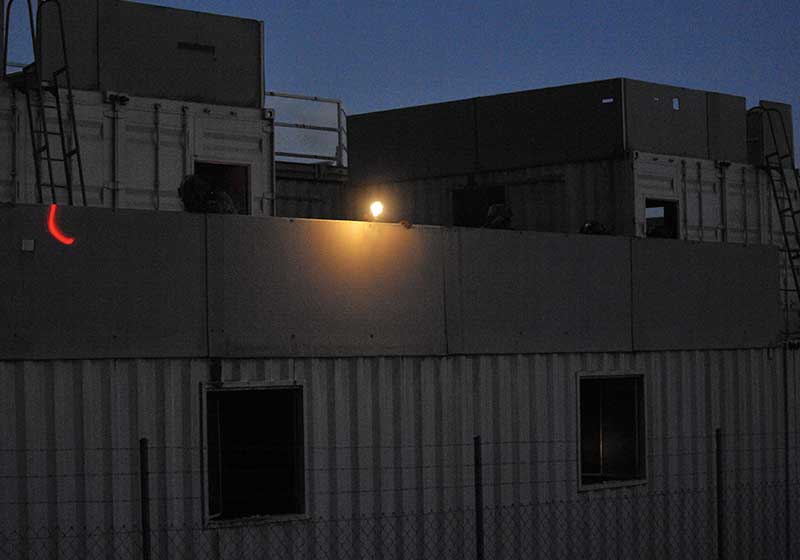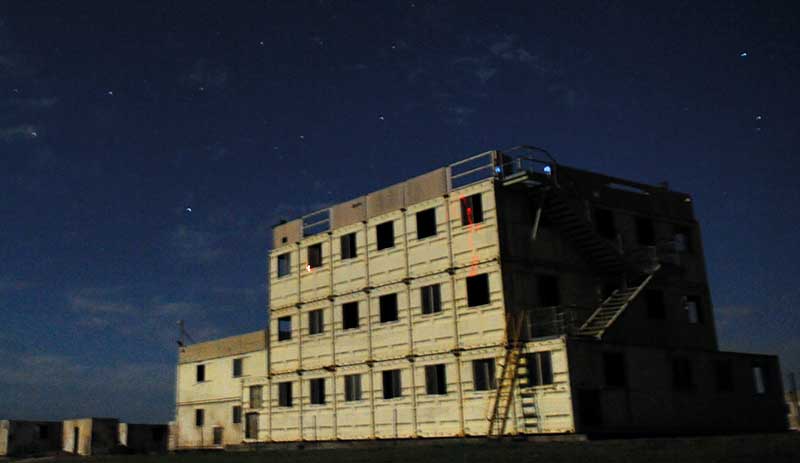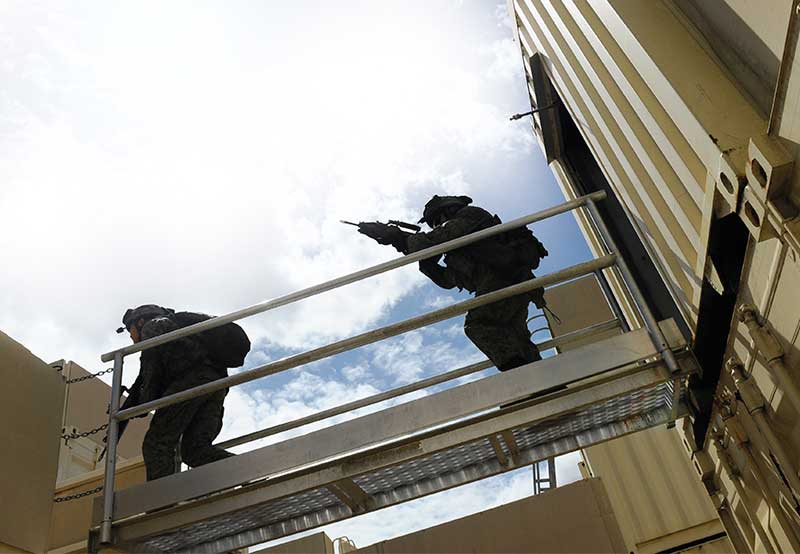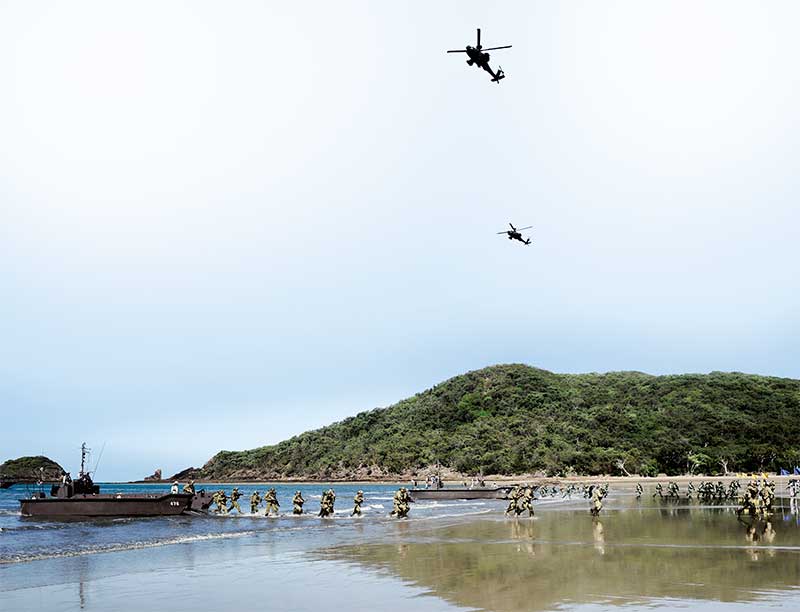OPS & TRAINING
JOINT OPS DOWN UNDER
06 Jan 2015
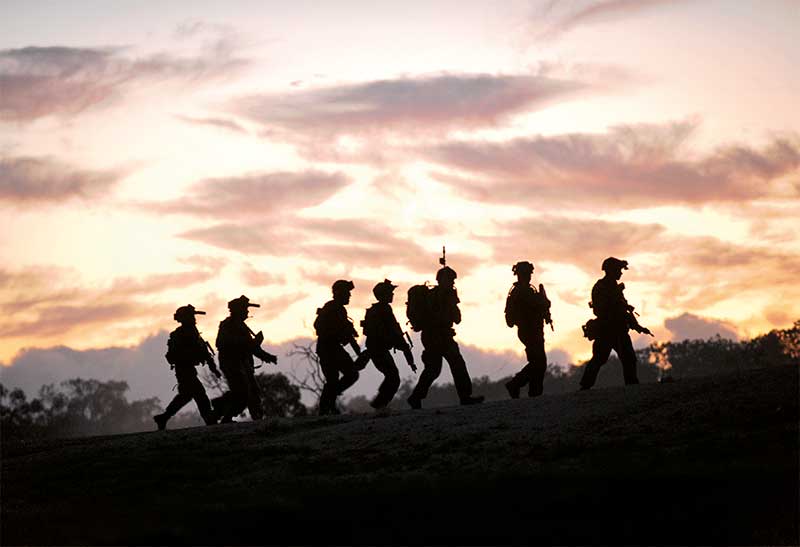
Singapore and Australia put combat boots on the ground together in tri-Service operations for the first time during the Exercise Wallaby series.
As the darkness of night melts away, muzzle flashes bloom in the remaining gloom like deadly flowers. The unmistakable acrid odour of gunfire hangs in the air.
You hear the soldiers as they shuffle through the urban sprawl, clearing the area methodically. Suddenly, one of the rooftops explodes in a hail of gunfire to provide cover for the final assault.
Soldiers emerge from the shadows. Under the remaining moonlight and periodic flashes from the heavy machine gun fire, you can just barely make out that the soldiers are wearing different uniforms.
The group crosses the road stretching towards a fortified four-storey building which had, just moments ago, soldiers taking pot shots at them. The cover-fire tactic is working, providing the crucial seconds for the breakout force to mount a direct attack.
Within minutes, they are in the building. Shortly after, the dust settles and the soldiers have worked their way through the four-storey building. Mission accomplished.
FIGHTING AS ONE
Behind this slick pre-dawn attack on 9 Nov 2014 were soldiers from the Singapore Armed Forces (SAF) and Australian Defence Force (ADF). It is the first time that the two sides have put combat troops together to jointly execute complex ground manoeuvres for the Exercise Wallaby series, held in Queensland, Australia.
Codenamed Trident, this component of Exercise Wallaby was held from 5 to 11 Nov 2014. It involved more than 800 personnel from the SAF and the ADF.
The larger Exercise Wallaby 2014 was held in the Shoalwater Bay Training Area (SWBTA), Queensland, Australia, from 18 Sep to 15 Nov 2014. It involved more than 5,000 personnel and over 400 SAF platforms.
GETTING TO KNOW YOU
While it looked easy enough, the key to operations like these is to train to such a level that it becomes second nature to the soldier, said Lieutenant Colonel (LTC) James Yin, Commanding Officer of the Battalion Task Force for Exercise Trident.
"Urban operations are very fluid. Once you enter a space, the soldiers have to dominate every opening which the enemy can use to fire at them," explained LTC Yin, who had about 40 SAF soldiers and a platoon of ADF troops under his charge for the urban assault at the Urban Operations Training Facility (UOTF) in the SWBTA.
"The more experienced the soldiers are, the less time they spend thinking about what's next. It becomes instinctive; you point your weapon in the right direction and the fighting team covers each other while advancing forward," said LTC Yin.
Adding to the complexity was the fact that the UOTF is modelled after a typical Middle Eastern township that has a large central market square area with tightly spaced residential buildings - an unfamiliar layout for the SAF soldiers.
Before the two sides got to this level of understanding, they had to work out how to integrate their urban operations drills. Like a language, every armed force develops a unique style and its own quirks over time. To integrate the two is often an uphill task.
WITH YOU, WITH ME
Despite just having a couple of days to integrate their drills, both sides were unfazed by the challenge.
Spending a day together at the UOTF for a practice run before the exercise proper, soldiers from the two forces showed each other their urban tactics before splitting up into smaller groups to fine-tune their combined drills.
"We don't usually get to see other forces' styles, so it's eye-opening to be able to work with the ADF guys," said Corporal (CPL) Raden Jafni Bin R. Jafri.
One of the key differences in the way the two forces did their urban drills was how they communicated. While the SAF soldiers preferred to move as a tight group with body contact, the ADF troopers would use more verbal communication.
"They would say 'with you, with me' to signal to each other who (in the section) is in the lead for a particular movement," explained CPL Raden.
FORGING BONDS
The ADF troopers sent to Exercise Trident were from the 7th Battalion, Royal Australian Regiment (7 RAR), based in Adelaide. Said Lance Corporal (LCP) Jarrad Gouma: "It was really good to see their (the SAF's) tactics... Overall, it's a good experience to have worked with the Singaporeans." LCP Gouma's unit had seen action in Afghanistan, and just returned about a year ago.
After observing the men in their work-up drills, LTC Yin said: "I think the chemistry between the two sides is very clear; they are growing more confident and they are very swift and deliberate when clearing rooms."
SHIP-TO-SHORE
The troopers from the SAF and the ADF reached the UOTF after almost two days of travelling. They first touched land after being launched from the Republic of Singapore Navy (RSN) Landing Ship Tank (LST) RSS Persistence in fast landing craft.
Following close behind were supporting military vehicles such as 5-ton transport trucks.
"It is the first time I'm doing ship-to-shore (operations) so we're learning something from the Navy, and something from the ADF," said 2nd Sergeant Ang Jing Jie from the Battalion Task Force (BTF).
Other fighting assets such as Light Strike Vehicles (LSVs) were brought to shore via a CH-47 Chinook utility helicopter. Fully laden for combat, each LSV weighs almost three tons and is used to quickly take out armoured vehicles with its speed and lethal anti-tank weaponry.
TRI-SERVICE INTEGRATION
Besides using RSS Persistence as its launch pad, the troops also used the LST as a nerve centre to coordinate and plan their attacks. But first, there was the issue of moving hundreds of soldiers and their equipment to shore.
For that, planners from both the SAF and the ADF worked together to orchestrate the movements.
"Every day, there would be changes to events and part of our job was to make sure that the air, land and sea components were coordinated so that next-day operations could go on smoothly," said Captain (CPT) Kody Toh, one of the key planners for Exercise Trident from the RSN.
The SAF planners clearly impressed their ADF counterparts. Said ADF planner CPT Karina Cann: "The organisation and the way that information flows from the planners to the people on the ground has been brilliant.
"These guys just get up - no matter how tired they are - and some of them have had very little sleep, but they just do the work and get it all done.
"For me, as a logistician, being able to work through all the planning and finally see the forces projected onto shore is a blast. It's been really good."
SLICK MOVES
And the planning clearly came through on D-Day. As the naval fast craft ramps were lowered, the troops hit the ground with a pair of AH-64D Apache Attack Helicopters blazing overhead to provide cover.
A few seconds later, other fast craft lowered their ramps to push equipment to shore. Boots still dripping from the amphibious landing, the ground troops marched through the night to their first objective several kilometres away.
Earlier, two LSVs had been underslung to a forward objective by a CH-47 Chinook helicopter, ready for the troops' use. Simply put, it was one tightly integrated, orchestrated manoeuvre.
GOOD EARTH
Almost all of the SAF soldiers spoke of the advantages of training in the vast terrain at SWBTA.
"The ground here gives us a combination of hills and sparse areas," said Staff Sergeant Muhammad Ashik, a Platoon Sergeant in the BTF. "We really get to practise our navigation skills and learn how to make use of the lay of the land to be more stealthy."
On a higher level, what the SWBTA provides the SAF is the space to stretch its muscles. "The huge training area lets us practise all our air, land and sea components and put them into one integrated manoeuvre," said Chief Guards Officer Brigadier-General (BG) Melvyn Ong.
LTC Yin agreed: "Exercising here broadens our perspectives and exposes the troops to different ways of thinking.
"That leads us to rethink our own drills and try to see if there's a better way of doing things."
For the Navy, it was clearly the long coastline at the SWBTA that presented many training opportunities. "We have about 10km of beach which gives us a long coastline for full ship-to-shore operations," said Colonel (COL) Thng Chee Meng, the Navy Exercise Director.
There are two other exercise directors for Exercise Wallaby - COL Lim Kwang Tang (Army) and COL Yap Kwee Chye (Air Force).
Said COL Yap: "It's one of the few opportunities we can get together with all the other parts of the SAF for an integrated mission. We really treasure this chance and hope that these operations will continue to get bigger and more complex."

PRACTISE THIS
For the combat troops on the ground, Exercise Wallaby presents a valuable opportunity to learn.
Said Air Force Engineer 3rd Sergeant (3SG) Richard Charlie: "Operating in Australia brings several challenges. We work in the open when in the SWBTA and at night, there is less light so it's harder to do our servicing (of aircraft)."
While operating in the area, the downwash from the helicopter could obscure his vision. "We just have to be alert when we are out here because unlike in the airbases, there are no markings on the ground. It's just an airfield so we have to know where the aircraft will land and pre-position ourselves."
The tempo at Exercise Wallaby has been more intense, said 3SG Charlie. "Each time the aircraft come back, we have to get them ready to fly again for their next mission.
"But it's an enriching experience because we get to practise more things, such as weapon-loading, which we don't do so much of back in Singapore." He was in Australia for the entire duration of the two-month Exercise Wallaby.
FIRST-TIMERS
The Republic of Singapore Air Force (RSAF) brought their newly acquired SHIKRA radar for Exercise Wallaby 2014. It was the first time that the platform was participating in the exercise series.
Its full name is a mouthful - System for Hybrid Interceptor Knowledge of Recognised Air (SHIKRA) Radar System - but it brings better capabilities to the table.
The SHIKRA Radar is able to track three types of trajectories: bearing, range and elevation. Older radar systems only gave operators bearing and range information with no way of telling how high the object is in the sky.
| More on the SHIKRA The 3-D radar provides low-level radar coverage to give the RSAF a better air situation picture with high fidelity and accuracy. | ||
| System Performance | ||
| Range: | 100km | |
| Altitude: | 83,000ft (25km) | |
| Scan rate: | 40 RPM | |
| Deployment time: | 10 min | |
| Crew | ||
| Deployment: | 4 Operators | |
| Operations: | 2 Operators | |
"It tells you where exactly the tracked aircraft is in the sky in relation to where the SHIKRA Radar is deployed," said Lieutenant (LTA) Asher Chua.
The Full-time National Serviceman (NSF) was deployed in the middle of the sprawling SWBTA to provide the best 360-degree coverage for the RSAF.
"What we have observed is that the pick-ups are very stable. It gives us more confidence because the capabilities are a significant step-up over the older systems."
When asked what some of the challenges of operating in the SWBTA for the SHIKRA crew were, LTA Chua said: "The weather here is more unpredictable and cloud cover can sometimes affect radar operations.
"What we have seen so far is that the system is able to counter these situations and continue to give us an accurate picture."
BACKEND HERO
With more than 5,000 troops exercising over a span of 65 days for Exercise Wallaby, the backend logistics are a gargantuan task.
That is where the Forward Support Group (FSG) comes in. Based in Camp Growl, SWBTA, the FSG is a mini-logistics hub in itself. It takes care of the troops who arrive at Camp Growl over the three frames of Exercise Wallaby.
"Despite the small size of the FSG, we can accommodate over 1,000 people per frame.
We take care of their logistics and maintenance support, everything that the units require," said 3SG Haikal Norman; the 22-year-old NSF is a Supply Specialist.
Newly arrived units would typically ask for basic supplies such as whiteboards and projectors to set up their ops rooms to plan their training, said 3SG Norman.
He remembered one request that sent his section scrambling. "We tore the container apart to find a box of staples when a unit asked for them.
"Nothing too small for us here. Resources are pretty scarce so we try to help units out as we are their main point of contact for any day-to-day issues they might have."
By the time you read this, 3SG Norman would have completed his NS stint. He volunteered to be with the FSG for the entire duration of Exercise Wallaby and returned to Singapore on 22 Nov, just five days shy of his Operationally-Ready Date.
GET-UP AND GO
Praising the ADF troops, BG Ong said on 7 Nov 2014: "Despite the fact that the Australians just arrived a day ago, they came in, raring to go.
"It's the hallmark of a very professional army to be able to hit the ground running; to just execute what is given to them. It's something the SAF takes pride in being able to do too."
When asked what his personal takeaway was from the whole exercise, CPL Raden quipped: "One thing I've learnt is - no matter how fit you are or which country you are from - once your boots are wet, life sucks.
"But jokes aside, we're all soldiers. Whatever comes, we push on."
ALSO READ IN OPS & TRAINING
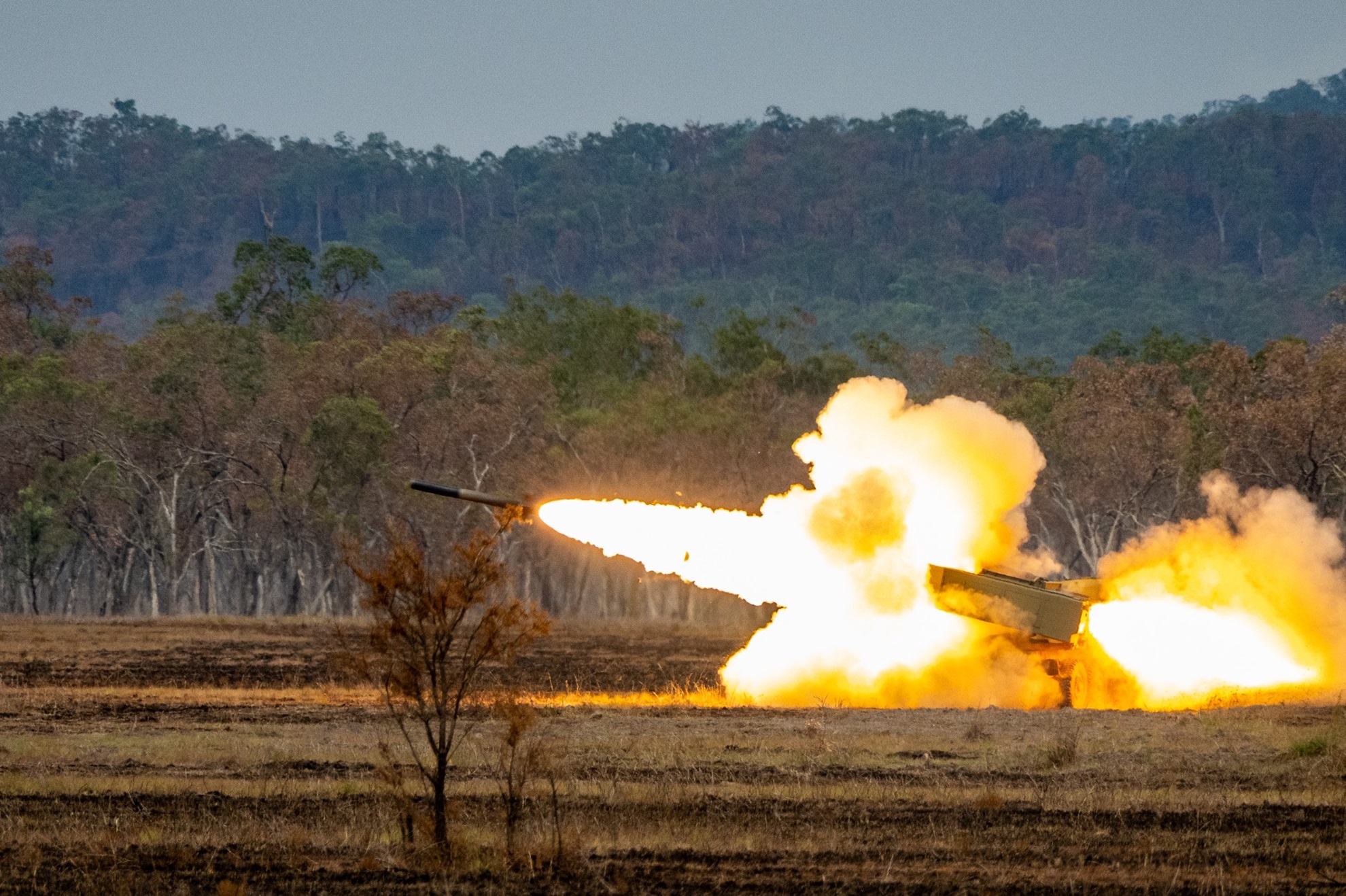
Exercise Wallaby 2025: To see better, shoot faster
31 Oct 2025
The SAF focuses on complex strike missions and multi-domain integration in Exercise Wallaby 2025, the 35th edition of its largest unilateral overseas exercise.
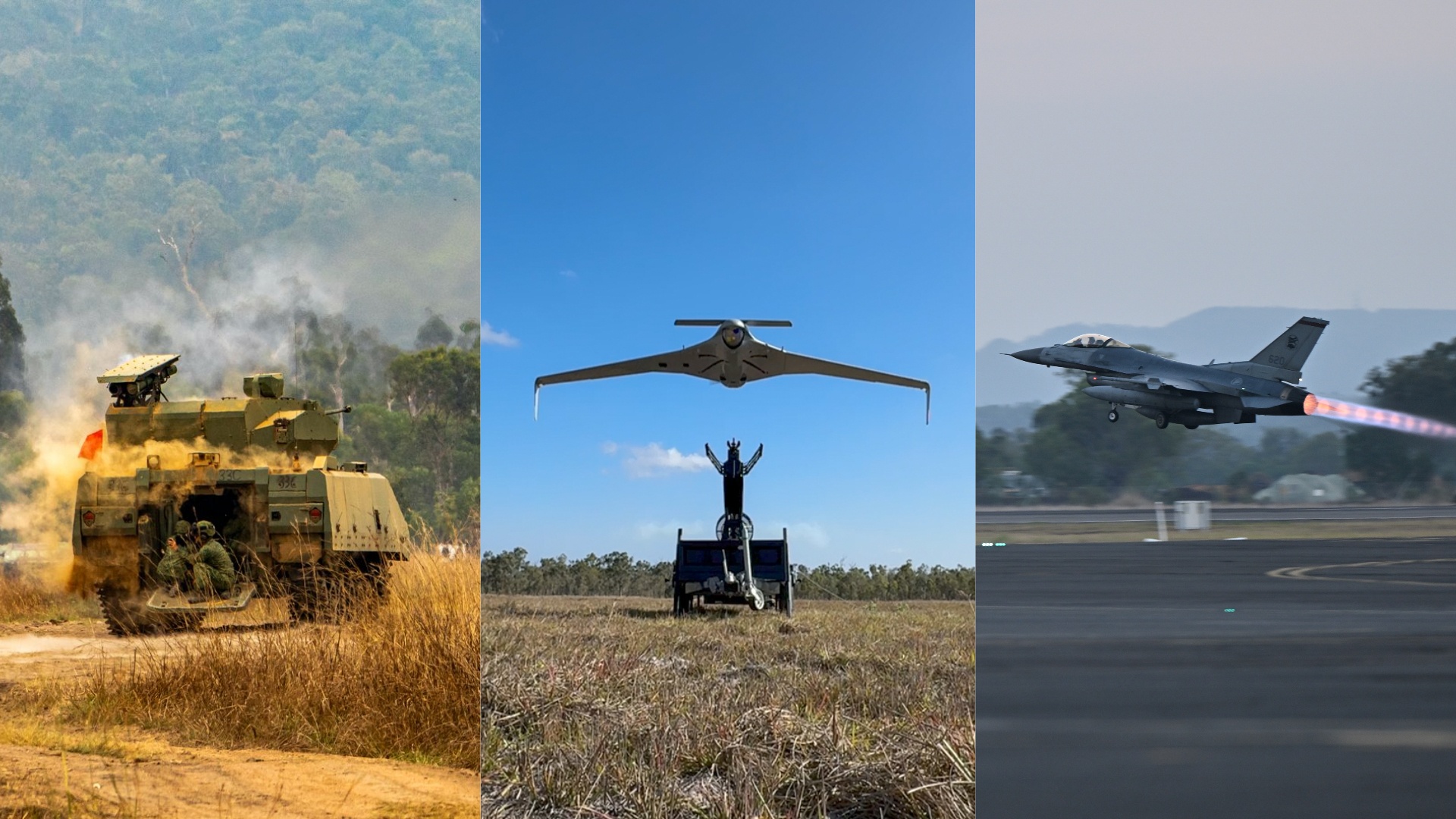
Ex Wallaby 25 – Greater Integration and Complexity
25 Oct 2025
The 35th edition of the SAF’s largest unilateral overseas exercise is an opportunity for expanded scale and deeper integration towards an effective, networked fighting force.

Ex Forging Sabre ramps up use of unmanned assets in integrated strike operations
12 Sep 2025
In this 10th edition of Exercise Forging Sabre, the SAF sharpened its cutting edge for the dynamic modern battlefield, with expanded integration between manned and unmanned platforms.


